Transcription of Homegrown Violent Extremism
1 Defining Homegrown Violent ExtremismHomegrown Violent extremists are those who encourage, endorse, condone, justify, or support the commission of a Violent criminal act to achieve political, ideological, religious, social, or economic goals by a citizen or long-term resident of a Western country who has rejected Western cultural values, beliefs, and Homegrown Violent extremists are a diverse group of individuals that can include citizens, naturalized citizens, green card holders or other long-term residents, foreign students, or illegal immigrants. Regardless of their citizenship status, these individuals intend to commit terrorist acts inside Western countries or against Western interests abroad. Recruiting Homegrown Violent ExtremistsRadical recruiters use a combination of mainstream and specialized social media sites and websites to encourage individuals and groups already in the West to rise up and use the blend factor to their advantage.
2 The blend factor refers to the notion that there are no visual or physical cues, such as a dress code or location, that automatically identify someone as a Violent extremist to law enforcement, making it easier for Homegrown Violent extremists to blend into the general population in disengaged communities. In addition, the Internet provides disengaged individuals ready access to propaganda and agents of all varieties of Violent Extremism . Homegrown Violent Extremism AWARENESS BRIEFAWARENESS BRIEF2 Furthermore, recent incidents involving lone gunmen demonstrate the potential danger, lethality, and effectiveness of a small-arms attack by a single individual. All of these examples explain precisely why law enforcement must remember to focus on the behavior and activities of individuals and not rely on stereotypes such as general of Homegrown Violent ExtremismOne such example of how an individual can become Homegrown Violent extremist is the Somali Travelers Case.
3 Minnesota is believed to have the largest population of Somalis in the United States, most of who live in Hennepin and Ramsey counties. Over the past few years, more than 20 young men, nearly all of Somali descent, from the Minneapolis-St. Paul (Twin Cities) area traveled to Somalia to join al Shabab, a terrorist group with ties to al Qaeda. These men trained and fought with al Shabab and were all residents of the Twin Cities. Family members said they did not know their loved ones had radical views. Hennepin County law enforcement believe that six of the young men were killed traveling to Somalia to join al Shabab; one man died as a suicide bomber, but the cause of death for the other five remains Hennepin County responded to concerned community members with a multi-pronged effort to include information sharing, suspicious activity reporting, robust community outreach, community oriented policing, and officer training, In addition, the county has a Somali deputy and a Somali cadet, and a prominent member of the Somali community acts as a civilian outreach liaison.
4 Likewise, Colleen LaRose, also known by her screen name Jihad Jane, is a AWARENESS BRIEFAWARENESS BRIEF3 Pennsylvania woman who was arrested as part of a terror plot targeting a Swedish cartoonist. According to the Attorney for the Eastern District of Pennsylvania, Zane David Memeger, This case clearly underscores the evolving nature of the terrorist threat that we now face in this country. The Internet has made it easier for those who want to attack the American way of life to identify like-minded individuals to carry out their terroristic plans. 3 The Role of Community Policing in Preventing Homegrown Violent ExtremismCommunity policing promotes the use of partnerships between law enforcement and the community to address public safety concerns. Citizens who are empowered by law enforcement are a valuable asset to any department or agency and can play a large role in countering Violent Extremism .
5 Because Homegrown Violent Extremism takes place within local communities, law enforcement agencies benefit most when they work with their communities toward building a trusting relationship, for example, by engaging community members and informing them about public safety issues such as Homegrown Violent Extremism . As a result, citizens are more inclined to reach out to law enforcement and report suspicious activity. Ways in which law enforcement and the community can work together to use social media to help identify, prevent, and counter Homegrown Violent Extremism include the following:Educating community members Community members are often unaware of the common indicators of radicalization to violence, particularly those related to Homegrown Violent Extremism . Through educational campaigns and partnerships, law enforcement agencies and the communities they serve can take advantage of early opportunities to detect and intervene before an individual becomes Violent .
6 When properly educated, parents, teachers, and peers will be in a better position to recognize early signs of radicalization to Homegrown Violent community members across diverse issuesLocal law enforcement communities should use a broad approach to community engagement and partnership rather than focusing exclusively on Homegrown Violent Extremism . Often law enforcement agencies can establish trust and collaboration by leveraging their partnerships and engagements around more conventional public safety issues such as internet safety or concerns prioritized within local communities. This type of whole community approach often provides a smooth transition to discuss more volatile issues such as Homegrown Violent Extremism . Engagement across diverse public safety issues is less prone to placing cultural groups in a defensive position because they feel they are suspects.
7 These approaches show that police are concerned about issues common to all cultural groups and help avoid the trap of community members believing that law enforcement wants to collect information only to build cases and share that information with the FBI and other federal agencies. AWARENESS BRIEFAWARENESS BRIEF4e111321618 Published 2014 Youth engagementExtremists often try to recruit youth, whom they see to be the most vulnerable, for Homegrown Violent Extremism . Thus, law enforcement s attempts to engage youth in positive relationships provide an opportunity to counter the message offered by Homegrown Violent Extremism . Offering programs such as police athletic leagues, youth police academies, and youth advisory councils and sponsoring youth-specific events help law enforcement to potentially offset the allure of radicalization for some vulnerable youth.
8 Endnotes1. This definition of Homegrown Violent extremist is a combination of the definitions for Violent extremist and Homegrown Violent extremist that can be found in: IACP Committee on Terrorism, Countering Violent Extremism (CVE) Working Group, A Common Lexicon (Alexandria, VA: International Association of Chiefs of Police, 2012), Richard W. Stanek, It Can and Does Happen Here: Somali Youth with Terrorist Ties in the Twin Cities, The Police Chief, February 2011, 48 52, =2313&issue_id= Federal Judge Sentences Jihad Jane to Serve 10 Years in Prison for Role in Plot to Commit Murder Overseas, FBI, Philadelphia Division new release, January 6, 2014, project was supported by Cooperative Agreement Number 2011-CK-WXK-010 awarded by the Office of Community Oriented Policing Services, Department of Justice.
9 The opinions contained herein are those of the author(s) and do not necessarily represent the official position or policies of the Department of Justice. References to specific agencies, companies, products, or services should not be considered an endorsement by the author(s) or the Department of Justice. Rather, the references are illustrations to supplement discussion of the issues. This Awareness Brief is one of a series and part of other products produced as part of the Role of Community Policing in Homeland Security and the Countering Violent Extremism (CVE) initiative. For more information about the CVE initiative, and to access additional IACP resources, please visit Internet references cited in this publication were valid as of the date of this publication. Given that URLs and websites are in constant flux, neither the author(s) nor the COPS Office can vouch for their current validity.
10 Recommended citation:International Association of Chiefs of Police. 2014. Homegrown Violent Extremism . Awareness Brief. Washington, DC: Office of Community Oriented Policing Department of JusticeOffice of Community Oriented Policing Services145 N Street NEWashington, DC 20530To obtain details on COPS Office programs, call the COPS Office Response Center at the COPS Office online at


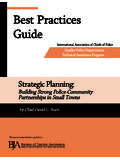
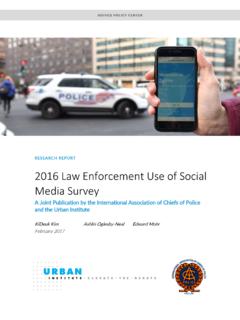
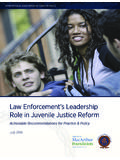

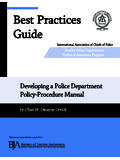
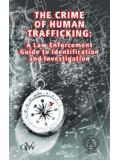
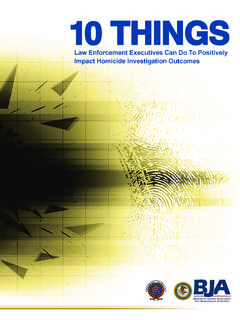

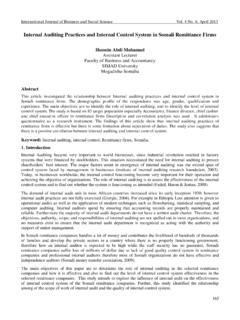






![Ethiopia Demographic and Health Survey 2016 [FR328]](/cache/preview/b/4/6/c/8/f/a/7/thumb-b46c8fa7d3e1cb3435d90bf577845b98.jpg)